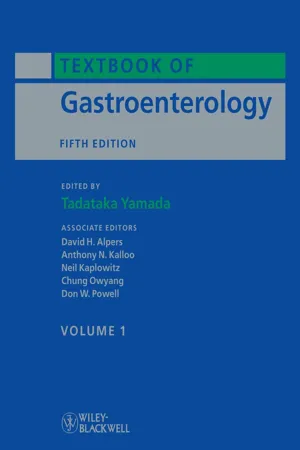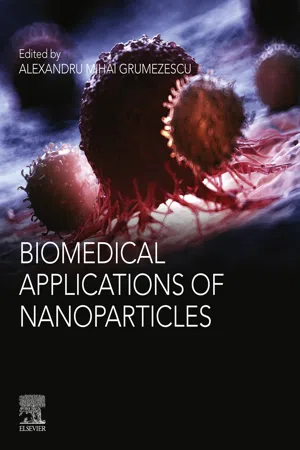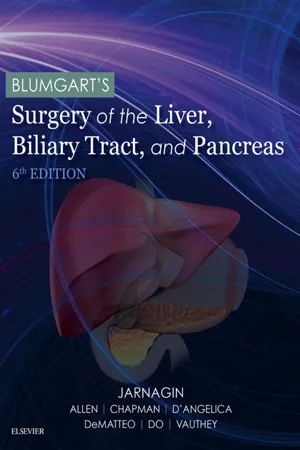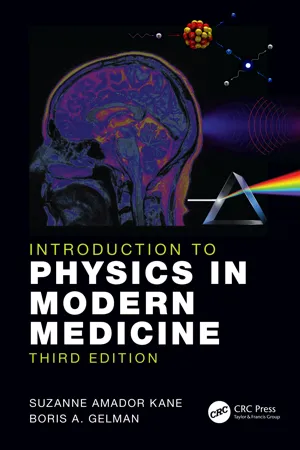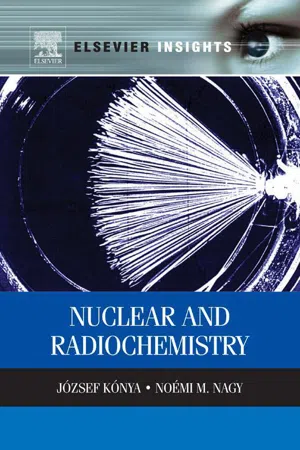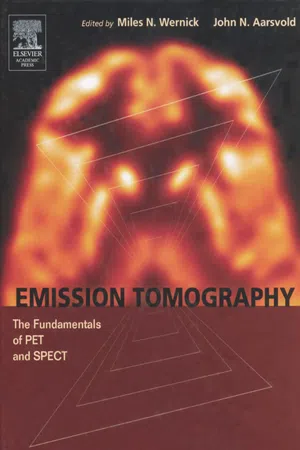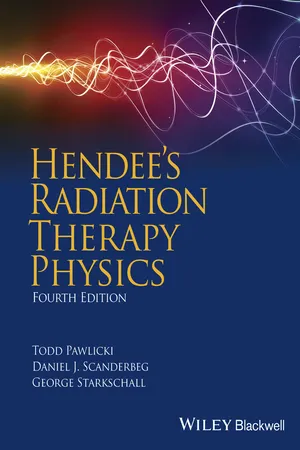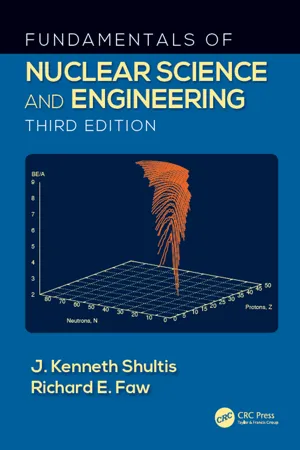Physics
Radionuclide Imaging Techniques
Radionuclide imaging techniques involve the use of radioactive substances to create images of the body's internal structures and functions. These techniques, such as positron emission tomography (PET) and single photon emission computed tomography (SPECT), are valuable tools in diagnosing and monitoring various medical conditions, including cancer, heart disease, and neurological disorders. They provide detailed information about organ function and can help guide treatment decisions.
Written by Perlego with AI-assistance
Related key terms
Related key terms
1 of 4
Related key terms
1 of 3
10 Key excerpts on "Radionuclide Imaging Techniques"
- eBook - ePub
Medical Imaging - E-Book
Techniques, Reflection and Evaluation
- Elizabeth Carver, Barry Carver, Karen Knapp(Authors)
- 2021(Publication Date)
- Elsevier(Publisher)
28: Radionuclide Imaging Robert Gordon Introduction Nuclear medicine has three distinct practice areas: diagnostic radionuclide imaging incorporating positron emission tomography (PET), in vitro laboratory-based diagnostics and unsealed source radionuclide therapy. In all three areas the power of nuclear medicine is its ability to diagnose and/or treat disease at a physiological or molecular level. When radioactive substances are administered to patients, whether for diagnostic or therapeutic purposes, they are collectively referred to as radiopharmaceuticals. For diagnostic imaging these radiopharmaceuticals provide a way of visualising patterns of biological activity in the organs of interest. This is achieved by imaging the distribution of radiopharmaceuticals which are selected based on their ability to be taken up by the organ or pathology of interest. Abnormalities including trauma or the effects of pathogenic invasion can be identified using carefully targeted radiopharmaceuticals. The great advantage of nuclear medicine imaging is that, except in the case of trauma, physiological changes usually precede anatomical changes. 1 In vitro nuclear medicine utilises radioactive substances on human tissue and/or fluid samples to diagnose a wide range of pathologies. The most common in vitro test performed in nuclear medicine departments’ laboratories is the glomerular filtration rate test (GFR) used to calculate precise renal function. There are several approved techniques to ascertain accurate GFR values in nuclear medicine using either technetium 99m (99m Tc)-labelled DTPA or chromium 51 (51 Cr)-labelled EDTA. Unsealed source therapy is used in the clinical management of both benign and malignant disease. The intention is to deliver an appropriate radiation dose to the pathological tissue in order to cause cell death. Consequently, radioactive substances that emit beta particles are commonly used - eBook - ePub
- Tadataka Yamada(Author)
- 2011(Publication Date)
- Wiley-Blackwell(Publisher)
134 Applications of radionuclide imaging in gastroenterology Harvey A. ZiessmanRadiopharmaceuticals and radiation detection instrumentation Clinical nuclear medicine studiesRadionuclide diagnostic methods have been used by gas-troenterologists for decades. For example, the first publication on the use of radionuclides to quantify gastric emptying was reported in the Lancet in 1966 [1]. The advantage of methods employing nuclear medicine is that interpretation is made based on physiology and function, information that is often markedly different from that of anatomical imaging methods, such as ultrasonography, computed tomography (CT), and magnetic resonance imaging (MRI).Radiopharmaceuticals and radiation detection instrumentation Radionuclide methodology requires a radiopharmaceutical (radioactive chemical or drug), which is administered to the patient, and radiation detection or imaging instrumentation.Radionuclides are used as “radiotracers,” that is, a radioactive label that allows for the detection, localization, and quantification of the chemical/drug to which it is bound. Radionuclides are unstable isotopes that emit radiation as they decay to a more stable isotope. Different radionuclides decay at different rates. For example, technetium 99m (99m Tc) has a 6-h half-life. If 10 millicuries (mCi) (370 MBq) is administered to a patient, 5 mCi (185 MBq) will remain undecayed 6 h later. Thus, images are usually performed early after administration, before it decays away – for 99m Tc, within 24 h.When a radionuclide is chemically bound to a chemical, for example, 99m Tc in sodium pertechnetate ([99m Tc]pertechnetate) and iodine 123 in sodium iodide (sodium [123 I]iodide), or to a pharmaceutical, for example, fluorine 18 in fluorodeoxyglucose ([18 F]FDG) or indium 111 in octreotide ([111 In]octreotide), it is referred to as a radiopharmaceutical. The pharmaceutical or chemical determines its distribution in the body. Different routes of administration result in different distributions within the body. Technetium 99m sulfur colloid (99m Tc-SC) administered intravenously will be extracted by the liver and spleen (liver–spleen scan), but when given orally is not absorbed and transits according to gastrointestinal motility (gastric emptying study). Diagnoses are made based on physiological deviations from the normal ranges in uptake, localization, distribution, and clearance. [18 F]Fluorodeoxyglucose, a glucose analogue, distributes throughout the body to all cells that metabolize glucose. Because malignant tumors have increased glucose metabolism compared with most nonmalignant tissues, cancers have increased uptake of [18 - eBook - ePub
Practical Radiotherapy
Physics and Equipment
- Pam Cherry, Angela M. Duxbury(Authors)
- 2019(Publication Date)
- Wiley-Blackwell(Publisher)
CHAPTER 13 The Use of Radionuclides in Molecular Imaging and Molecular RadiotherapyPaul Shepherd OBE and Terri GilleeceAim
The aim of this chapter is to introduce the fundamental principles and practice of the use of radionuclides in molecular imaging and molecular radiotherapy.13.1 Introduction
Radionuclides play a dual function in the management of cancer. Radionuclide imaging is used for the diagnosis, staging, and monitoring of cancer, and in radiotherapy or brachytherapy radionuclides have been at the forefront of cancer treatment for decades. A good example is the use of radioactive iodine in both the imaging and the treatment of thyroid cancers.A therapeutic radiographer is required to have an understanding of the physical principles underpinning and the potential hazards associated with the use of radionuclides in imaging and radiotherapy practice. Radionuclides are localised to the desired tissue by being chemically attached to, or incorporated into, a compound that is designed to follow a known biodistribution in the body. There are a number of different mechanisms by which this is achieved. The radionuclide and compound together is known as the radiopharmaceutical (RP ). By introducing RPs into the body that follow specific physiological pathways whilst emitting radiation, it is possible to detect and map penetrating radiation from outside the body to produce images or to use non‐penetrating radiation for therapy. In therapeutic applications the activities administered are much higher than for imaging. In recent years, methodologies have been developed specifically for tumour imaging (molecular imaging) and the targeting of tumours with radionuclides or molecular radiotherapy (MRT - eBook - ePub
- Alexandru Mihai Grumezescu(Author)
- 2019(Publication Date)
- William Andrew(Publisher)
Fahey et al., 2016 ).Nuclear medicine imaging differs from other radiological imaging techniques (like X-rays, magnetic resonance imaging (MRI), and ultrasound) in that the radiotracers used in nuclear medicine are related to the area of the body of interest. Nuclear medicine provides a different perspective on a disease condition and generates additional information to that obtained from X-ray images (Maher, 2004 ).Radioimaging has much higher sensitivity than MRI and much better tissue penetration than ultrasound and optical imaging. Nuclear medicine imaging has significant advantages to determine radionuclide concentration in various organs quantitatively. Based on this information, nuclear medicine can provide information about the pharmacokinetics and the body distribution of the radiolabeled compound (Ilem-Ozdemir and Asikoglu, 2012 ; Cai and Chen, 2007 ).The total mass and volume of administered radiopharmaceutical is very small (typically < 1.0 mL), significantly lower than the usual amount of MRI and CT contrast agent (Fahey et al., 2016 ).Unlike radiological imaging modalities, nuclear medicine imaging is an excellent noninvasive method of whole-body scanning, based on pathophysiological and pathobiological changes that occur in the earliest process (van der Laken et al., 1998 ; Becker, 1995 ). The acquired information from nuclear imaging studies is useful for both diagnostic purposes, such as the detection of functional abnormalities or early identification of tumors and therapy planning and follow-up (Pan et al., 2008 ; Salata, 2004 - No longer available |Learn more
- William R. Jarnagin(Author)
- 2016(Publication Date)
- Elsevier(Publisher)
Because the radioisotope is the same for the parent radiopharmaceutical and each of its radiometabolites, image data analysis alone cannot separate the composite biodistributions in nuclear imagery. In clinical practice, however, this is rarely relevant, because radiopharmaceuticals that have achieved widespread clinical use did so by having favorable in vivo pharmacokinetics, typically including in vivo metabolism that yields a biodistribution that predominantly represents that of one parent compound or relevant radiometabolite, with one predominant biologic “meaning.” This chapter discusses the meaning of each radiopharmaceutical scintigraphic biomarker scan relevant in HPB diseases. Once administered to a patient, the radioisotope used for diagnostic imaging emits radiation that can be detected by a nuclear scanner.Diagnostic imaging with radiopharmaceuticals, in standard clinical practice, may be referred to in various ways, including (1) general terms such as nuclear imaging or scintigraphy, (2) reference to one of two general types of scintigraphic camera technology (PET, SPECT/SPET), and (3) procedure involved (e.g., theranostic imaging).The term scintigraphy (Latin scintilla , “spark”) in medicine refers to the light produced by crystalline detectors in clinical scintigraphic cameras when those crystals are struck by gamma rays emitted from radiopharmaceuticals (e.g., as emitted from within a patient scanned after receiving a radiopharmaceutical injection). These scintillations produced in the crystalline detectors are recognized and processed by the camera system to yield nuclear imagery.Of the basic types of scans found in a radiology department (e.g., plain radiography, CT, MRI, US), diagnostic nuclear imaging scans are typically of the longest duration, in terms of both the time the patient must physically spend with the scanner and the time required for the entire study (start to finish), often with necessary delays before scanning or between scanning (i.e., if the patient is scanned more than once after a single radiopharmaceutical administration) to allow the radiopharmaceutical time to undergo desired in vivo physiologic processes. The total duration of a diagnostic nuclear imaging study thus depends on a variety of technical, biologic, as well as typical clinical logistical variables. Most frequently, a radiopharmaceutical is administered intravenously, by bolus injection. After the injection, a standard time-delay may be necessary before the patient undergoes scanning, to allow the radiopharmaceutical to spread throughout the body and achieve a biodistribution considered optimal for imaging. To acquire data for a single image, the time that a patient spends “in front of the camera” must be of sufficient duration for the scanner to collect a statistically robust number of radioactive signals, or counts, - eBook - ePub
- Suzanne Amador Kane, Boris A. Gelman(Authors)
- 2020(Publication Date)
- CRC Press(Publisher)
molecular imaging . The fundamental idea behind molecular imaging is that knowledge of the body’s biochemical processes can be used to create target molecules that selectively bind to receptor sites particular to disease or metabolic processes; these same agents then can be used either to image the process of interest, or to deliver drugs selectively using the same high specificity of interactions that make labeling possible.Many radionuclides have been identified that both emit an appropriate gamma ray energy and form a chemical compound of interest. Technetium-99m can now be attached to so many useful compounds that it is extremely widely used in nuclear medicine imaging. Gamma camera scans with technetium-99m and other radionuclides are used to image the skeleton, urinary tract, lungs, heart, liver, and thyroid gland, among other applications. For example, the distribution of technetium-99m-labeled red blood cells can be used to trace the flow of blood and indicate the quality of circulation throughout the body. Others radiopharmaceuticals are taken up preferentially by a particular organ or by tumors. For example, a chemical compound called technetium-99m-HIDA normally is concentrated in the gallbladder. Thus, an abnormal absence of radioactive tracer compound could indicate impaired circulation in a region of the body (in the first case) or blockage of the gallbladder (in the second). In scintimammography , a technetium-99m tracer compound can be used to image tumors in breast cancer.More than 70% of nuclear medicine imaging is performed with technetium-labeled compounds, but a variety of other useful radionuclides exist. Xenon-133 is a gas that can be used to image the lungs and respiratory system. Gallium-67 is used in cancer imaging. For example, the compound gallium-67-citrate preferentially segregates to tumors and abscesses, marking their locations (Figure 6.1 ). Both gallium-67 and indium-111 can be attached to antibodies - eBook - ePub
- Jozsef Konya, Noemi M. Nagy(Authors)
- 2012(Publication Date)
- Elsevier(Publisher)
12.6 .12.1 Fields of Nuclear Medicine
There are three main fields of nuclear medicine.12.1.1 In Vitro Diagnostics
The meaning of in vitro is “measurement in a vial.” In this case, the patient does not make direct contact with the radioactive material, but the sample (blood, urine, etc.) is taken and analyzed using a radioactive component; in most cases, the concentration of a constituent will be measured. The first such procedures were developed by Yalow and Berson (1959) to measure insulin and by Ekins (1960) to measure thyroxin concentrations in blood. Rosalyn Yallow was awarded the Nobel Prize for medicine in 1977 for developing several peptide hormone RIAs. For further details, see Section 12.3 .12.1.2 In Vivo Diagnostics
The term in vivo refers to measuring or imaging the distribution of a radiopharmaceutical in a living organism. Such procedures have been known for a long time, but the most commonly used imaging device, the so-called gamma camera (see Section 12.4.1 ), was developed by Hal Anger in Berkeley in 1957. While the gamma camera detects single photons, the pair of photons emitted when a positron meets an electron (annihilation radiation, as discussed in Section 5.3.3 ) can also be imaged using a so-called PET (discussed further in Section 12.6 ).12.1.3 Therapy with Unsealed Radioactive Preparations
If it is possible to deposit beta- or alpha-emitting radiopharmaceuticals into or close to the organ or tissue to be deactivated or destroyed, then this short-range radiation will affect only a few layers of cells, or, when evenly distributed in an organ, it will irradiate the targeted organ selectively. This procedure requires radiopharmaceuticals accumulating specifically in the target organ, and preferably nowhere else in the body. - eBook - ePub
Emission Tomography
The Fundamentals of PET and SPECT
- Miles N. Wernick, John N. Aarsvold(Authors)
- 2004(Publication Date)
- Academic Press(Publisher)
CHAPTER 4Basic Physics of Radionuclide Imaging
CRAIG LEVIN, Molecular Imaging Program, Stanford University School of Medicine, Stanford, CaliforniaI. Where Do the Nuclear Emissions Used in Radionuclide Imaging Come From? II. Relevant Modes of Nuclear Decay for Medical Radionuclide Imaging III. Production of Radionuclides for Imaging IV. Interactions of Nuclear Emissions in Matter V. Exploiting Radiation Interactions in Matter for Emission Imaging VI. Physical Factors That Determine the Fundamental Spatial Resolution Limit in Nuclear ImagingRadioisotope imaging is the in vivo imaging of physiological function using radiation emanating from radionuclides in tracer quantity inside the subject. Physics is involved in almost every step, from the production and decay of the radionuclide to the formation and analysis of the resulting images. In this chapter we discuss some basic physics topics that are relevant to imaging of nuclear emissions. More in-depth discussions can be found in the references given at the end of this chapter, especially in Rollo (1977) and Sorenson and Phelps (1987) . Because later chapters deal with the topics of radiation detectors (Part IV) and imaging systems (Parts II, III, and V) used in nuclear emission imaging, we do not cover the topics of radiation detector and imaging system instrumentation physics in full detail in this chapter.I WHERE DO THE NUCLEAR EMISSIONS USED IN IMAGING COME FROM?
A Nuclear ConstituentsThe atomic nucleus consists of neutrons and protons, also known as nucleons. The proton has one unit of fundamental electronic charge, whereas the neutron is electrically neutral. The size and shape of the nucleus depends on the number of neutrons (N) and protons (Z ), their particular energy states, and the angular momentum of the nucleus. A typical nuclear diameter is on the order of 10−12 −10−13 cm and the density of nuclear matter is roughly 1014 g/cm3 . The total number of nucleons in a nucleus (A ) is known as the mass number . A nuclide has a particular nuclear composition with mass number A, atomic number Z and neutron number N. The notation we use to identify a particular nuclear composition of an atomic element E with atomic number , or just A E. Atomic species with identical chemical properties (same Z) but distinct masses (different A ) are called isotopes. Nuclides with the same A are called isobars ; those with the same N are called isotones. - eBook - ePub
- Todd Pawlicki, Daniel J. Scanderbeg, George Starkschall(Authors)
- 2016(Publication Date)
- Wiley-Blackwell(Publisher)
radionuclide) is administered to a patient, usually tagged to a specific γ-emitting radioactive pharmaceutical selected for its tendency to concentrate in a specific organ or tissue of interest in the patient. Gamma rays emitted by the nuclide escape from the body and are measured with an external detector. The measurement process yields a “map” of the accumulation, distribution, and excretion of the pharmaceutical in the organ or tissue of interest.The use of radioactively tagged compounds as biochemical tracers has been of great importance in biology since the discovery of radioactivity. Radioactive tracers have contributed in a major way to the many advances in biology and the basic sciences underlying medicine (e.g., biochemistry, physiology, pharmacology, and cellular and molecular biology) that have occurred over this century. However, the routine use of radioactively tagged pharmaceuticals (radiopharmaceuticals) in clinical medicine awaited three major advances that occurred in the middle of the twentieth century. The first of these advances was the availability of nuclear reactors as sources of artificially produced radioisotopes that followed World War II and was facilitated by the Atoms for Peace program of the Atomic Energy Commission. The second advance was the development of the scintillation camera by Anger in the late 1950s,24 while the third advance was the evolution of the radionuclide generator, specifically the 99 Mo-99m Tc radionuclide generator, at about the same time. Today, many patients in the United States experience at least one nuclear medicine procedure, and many potential candidates for radiation therapy undergo one or more nuclear medicine procedures for purposes such as staging cancer and determining the likelihood and extent of its dissemination.Properties of radioactive pharmaceuticals
Radionuclides are selected for diagnostic nuclear medicine based on properties that make them desirable for medical imaging. Among these desirable properties are: - eBook - ePub
- J. Kenneth Shultis, Richard E. Faw(Authors)
- 2016(Publication Date)
- CRC Press(Publisher)
In diagnostic medicine, the radiologist’s ability to produce images of various organs and tissues of the human body is extremely useful. Beginning with the use of x rays at the start of the twentieth century to produce shadowgraphs of the bones on film, medical imaging technology has seen continuous refinement. By the 1920s, barium was in use to provide contrast in x-ray imaging of the gastrointestinal system. Intravenous contrast media such as iodine compounds were introduced in the 1930s and in angiography applications by the 1940s. Fluoroscopic image intensifiers came into use in the 1950s and rare-earth intensifier screens in the 1960s. Computed tomography (CT), positron emission tomography (PET), and singlephoton emission tomography (SPECT) saw their beginnings for clinical use in the 1960s and 1970s. Picture archive and communication systems (PACS) began to see common use in the 1990s. The 1990s also saw interventional radiology becoming well established in medical practice, especially in coronary angioplasty procedures.Along with advances in diagnostic medicine, corresponding advances have been made in using nuclear technology for therapy. There are three general classes of radiation therapy. In brachytherapy, direct implants of a radioisotope are made into a tumor to deliver a concentrated dose to that region. In teletherapy, a beam delivers radiation to a particular region of the body or even to the whole body. In radionuclide therapy, unsealed radiopharmaceuticals are directly administered to patients for curative or palliative purposes.Indeed, nuclear applications have become such a routine part of modern medical practice that almost all of us at one time or another have encountered some of them. Table 14.1 lists personnel and frequencies for medical radiology and radiation therapy procedures, both globally and in developed countries.Table 14.1. Global use of medical radiology (1991-1996). From UN [2000].a Level I represents countries with one or more physicians per 1000 population.Today we see many changes and new applications of nuclear technology in medicine. The use of rectilinear scanners is declining rapidly while the use of gamma-ray cameras, PET, and CT scanners is growing. Diagnostic radiology has long been used for imaging and study of human anatomy. In recent years, using CT, PET, and gamma-ray scanners, as well as MRI (magnetic resonance imaging), medical science has advanced to imaging the physiology and metabolism of the human body.14.1 Diagnostic ImagingDiagnostic radiology using x rays, both dental and medical, including mammography, dominates radiology. This is true for both numbers of patients and numbers of procedures. Each year in the United States, for example, more than 130 million persons annually receive diagnostic x rays [NAS 1980] and more than 250 million examinations are performed [UN 2000].
Index pages curate the most relevant extracts from our library of academic textbooks. They’ve been created using an in-house natural language model (NLM), each adding context and meaning to key research topics.
Explore more topic indexes
Explore more topic indexes
1 of 6
Explore more topic indexes
1 of 4

